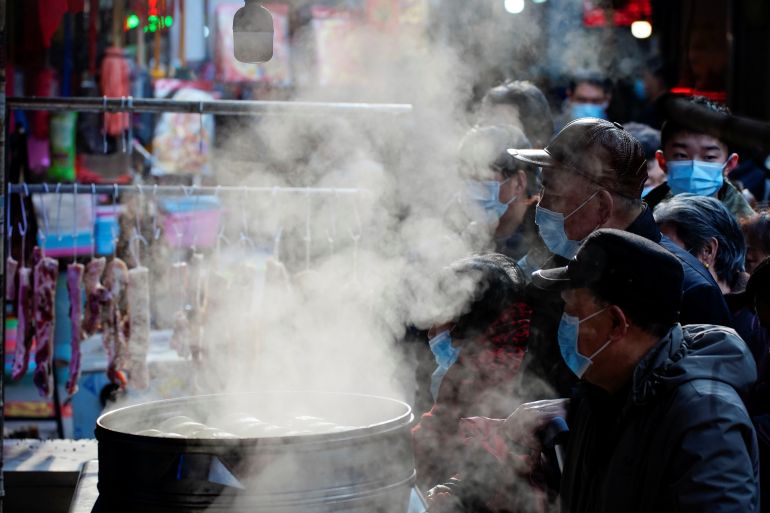China posts record economic growth after plunge 12 months ago
But quarterly comparison shows slowing momentum, with analysts forecasting levelling off in construction and exports.

China’s economy posted a record growth rate in the first quarter compared with the same period last year, when the country was in the midst of a crushing lockdown to control the spread of the coronavirus.
But compared with the last quarter of 2020, the growth rate slowed, official figures show, raising questions about the strength of the recovery over the rest of this year.
Keep reading
list of 4 itemsChina’s population seen growing older in economic danger sign
Oil gains on strong China data, rally capped by vaccine concerns
Inflation or pollution? Tough choice facing China steel industry
Gross domestic product (GDP) expanded by 18.3 percent in the first three months of 2021 year-on-year, according to data from the National Bureau of Statistics. The figure was slower than the 19 percent growth rate forecast by economists in a poll conducted by the Reuters news agency and 18.5 percent by Bloomberg.
On a quarter-on-quarter basis, GDP grew by 0.6 percent in the first three months, slower than the revised 3.2 percent expansion recorded in the previous three-month period and also below analyst forecasts.
![China GDP, industrial output, retail sales chart [Bloomberg]](/wp-content/uploads/2021/04/371005094.jpg?w=770&resize=770%2C476)
“China’s GDP growth jumped to a record high in [year-on-year] terms last quarter. But this was entirely due to a weaker base for comparison from last year’s historic downturn,” Julian Evans-Pritchard, a senior China economist at Capital Economics, said in a note sent to Al Jazeera.
“In [quarter-on-quarter] terms, growth dropped back sharply and with the exception of [the first quarter of] last year, was slower than at any other time during the past decade,” he added.
Breaking down the headline numbers showed weaknesses in key sectors of the economy.
Growth in industrial and construction activity slowed to 1.3 percent in the first three months of the year from 2.3 percent in the fourth quarter of 2020 based on quarter-on-quarter comparisons, according to Capital Economics. Meanwhile, the services sector contracted by 2.3 percent after a 3.9 percent expansion based on the same comparisons.
Dutch bank ING attributed the moderation in industrial production growth to slower overseas demand for clothing and a slowdown in production of smart devices, possibly due to a global shortage in computer chips. Tighter anti-pollution measures imposed on refineries may have also contributed to the slowing growth in industries, ING said.
But other parts of the economy continue to perform strongly.
Retail sales grew by 1.8 percent in March compared with the month before following a 1.5 percent expansion in February.
More chips, please
Looking ahead, analysts say China’s economy is unlikely to be able to sustain the rapid growth of the first quarter, as the government reins in some of the stimulus measures it launched during the depths of the crisis.
“Most quarters should experience moderate growth because without base effects to swell the comparison, ‘super-high’ growth will be very hard to repeat,” ING’s chief economist for Greater China, Iris Pang, said in a note sent to Al Jazeera.
The chip shortage – which has severely curtailed production of cars and crucial computer network equipment such as routers in the United States and Japan – and the direction of China-US relations could also be key factors determining the strength of China’s recovery, Pang said.
“China-US relations will be critical for China’s economic growth, mostly in technology development. It is likely that the US will continue to put more pressure on China on this topic,” Pang wrote.
“Concern about chip shortages is becoming a practical issue for businesses, from investment to production to exports and domestic sales. How long this bottleneck will take to clear is unclear.”
For the full year, ING expects China’s economy to expand by 8.6 percent, a faster growth rate than its earlier forecast of 7 percent.
That would far surpass the government’s 2021 annual growth target of above 6 percent.